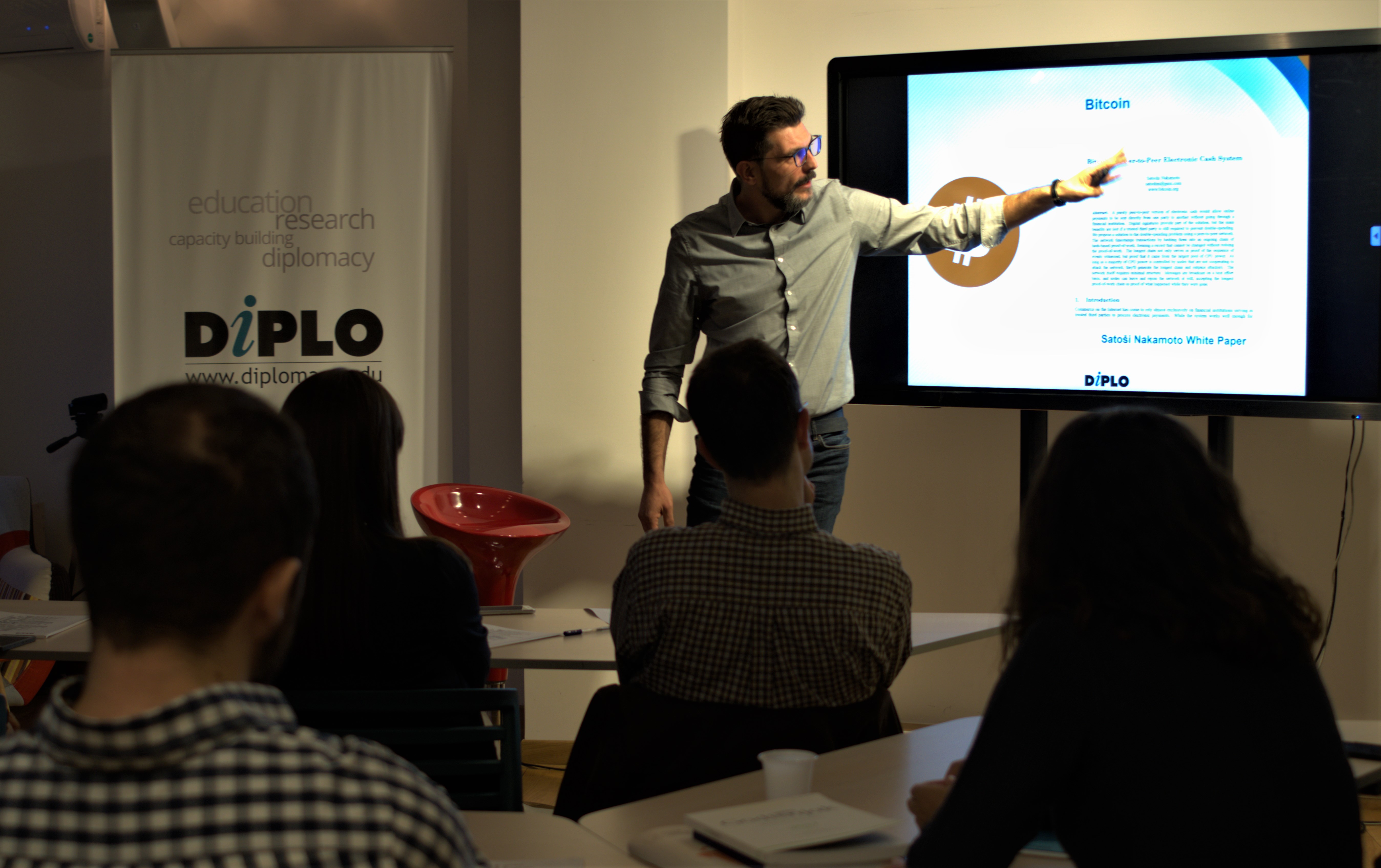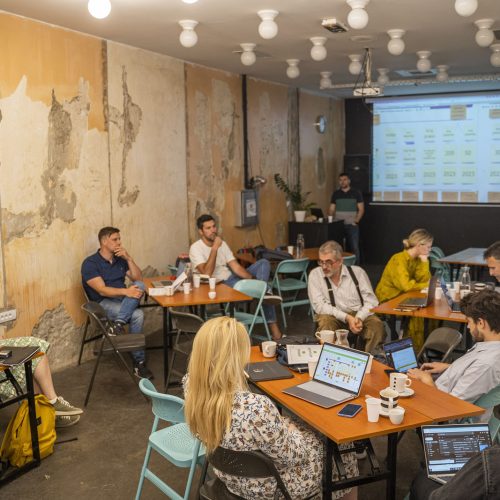This is a guest post by Arvin Kamberi, vice president of the Serbian Bitcoin Association. Kamberi has a keen interest in cryptocurrency and blockchain developments; first as an avid ‘miner’, then more in terms of regulation and consensus mechanisms surrounding the decentralised systems, with a primary focus on Bitcoin development. A part of his op-ed on the topic was also published in theGeneva Internet Platform’s Digital Watch Observatory.
To fully understand the incredible story behind the cryptocurrency and blockchain craze of 2017-2021, we must explain the unique setting in which events played out, setting the course for the collision. One component amplified the other, multiplying the effect, thus creating a perfect storm. Unfortunately, that storm took a toll on trust in the industry and caused financial losses.
The bitcoin
The cryptocurrency craze, particularly the Initial Coin Offering (ICO) phase during late 2017 and 2018, was set in motion by the miraculous success of the only working cryptocurrency: bitcoin. The cryptocurrency industry is a one-hit wonder. But, what a wonder this is!

Bitcoin presents the true marvel of human engineering of money, or the unit of account, built to help people trade online in the forthcoming digital age. It withstood the test of time and resiliency, becoming the worldwide recognised use-case for digital gold. New digital asset class. We witnessed the new coined terms such as: ‘crypto-rich’. Many of us heard that someone ‘made it on bitcoin’. Over-the-night millionaires were the new normal.
In wondering how bitcoin became a poster child for secure and open-source software, let us not forget that bitcoin is powered by the mighty encryption technology (Secure Hash Algorithm 2) still used in any secure digital product. Most importantly, it was developed by true masterminds of the even bigger miracle we witnessed: the internet.

Internet regulation and infrastructure
Since its inception, the Internet (a-network-of-networks) has built on open principles and maintained the spirit of the open, peer-to-peer connection. Setting internet standards significantly moved away from what we used for earlier industries. Being developed in the US, deregulation was an incentive model for a whole new era of entrepreneurs starting from the ‘garage in the parent’s home’. The IT powerhouses from Silicon Valley, and the rest of the world, outgrew to become most powerful companies in today’s economy by famously ‘move fast, and break things’
But boy oh boy, did they break a lot of things? Alongside the transformational power, the internet showed us the both sides of society-coin. Vigilant army of online scammers, tricksters, and new-kind online criminal organizations thrived also on using the internet to create false identities (‘On the Internet, nobody knows you’re a dog’).
The regulation and standardization efforts were always one step behind, trying mainly to mend the broken, rather than implement the safeguards. At its end, predicting the technology development, and acting in prevention is: a) Almost impossible. Particularly for the people unfamiliar with the technology insights, b) Might actually stifle the innovation in the field. Lack of global regulatory framework, and the issues of legal jurisdiction (internet being global), painted the next two decades of double-checking that we are on the REAL company website. Online entities become the main, and only form of the companies, creating a new kind of business that can disappear on the click of the button, and without leaving much of a trace. Even today, after years of prolific work of all stakeholders involved, cybercrime and online frauds are blooming. But this is a different story altogether, let’s get back to the cryptostorm ingredients.
Collapse of trust in traditional financial institution and the emergence of the new ones
Starting with the global economic crisis caused by the 2008 crash of the US investment banks, the trust of consumers toward the traditional financial institutions started to decline. Ushered in the promises of secure, and ever-rising markets, investors and the general public alike were caught unprepared for the collapse of financial institutions, and moreover for the fact that all those promises were made while knowing that there is nothing to back them up. Institutions obviously didn’t tell the whole truth (well..)
Around the same time, software companies discovered mobile phones to deliver private and personalized online products. Gradually, internet users were led to, I would call it a ‘personal digital revolution’.

Mobile users started looking for products that allowed them to do things that were not in our direct reach. Furthermore, to customize that experience in order to suit their personal preferences. We became personal cinema/theatre managers deciding our steady diet of art – by installing an app, we became taxi drivers – by installing an app, we became hoteliers – by installing an app, we became personal bankers, and even stock market investors by – you get it. Not to mention that one can do it ‘from the bed’, at ‘02:00 AM’ or under many other circumstances that are not suitable for that kind of decision.
Alongside the new fast-digital-payments industry which was delivering miracles on financial inclusion of unbanked, the retail investing industry was a new form of the capital inflow. By definition from investopedia: Retail investors are non-professional market participants who generally invest small amounts.The retail investment market is enormous since it includes retirement accounts, and online trading (among others)’. Power was in the number of users, not in the numbers on their trading accounts. The emergence of such online companies that are mostly backet by the larger, institutional investors, was recognised as a risk for the retail users and the overall consumers protection rights.
The perfect cryptostorm
The necromancers that summoned this storm, are quite vividly depicted in the latest Netflix documentary drama, ‘Bitconned’, which aired this January after two years of production. In 2017, the Centra Tech company raised $25 million in investments in their main product: a VISA-backed credit card, allowing people to spend their cryptocurrency at any retail store across the US.

Centra Tech’s CEO, CTO, and other executives had a Harvard Business School background or an MIT engineering degree. The new headquarters in downtown Miami was full of young, bright people, and 20,000 VISA cards were produced. However, none of this was real. Everything was a (not so cleverly) staged mirage.
The court case concluded in 2021, handing jail time sentences to the people involved. The documentary is led by one of three prominent persons behind Centra Tech, Ray Trapani, who collaborated with the federal investigation on the case. In the film, he explained in detail how two young scammers working at a car rental company raised millions in an ICO, having only a one-page website.
Once it started, the storm did not calm down for years. The story of Centra Tech from 2017 was replicated time and time again, culminating in the collapse of, at the time, the world’s second-largest company in the industry: FTX, an online cryptocurrency exchange. As we read from publicly presented pieces of court evidence, in the cases against Celsius, Luna and FTX, the crypto companies spent funds custodied by their investors.
How did crypto scam companies utilize the above ingredients?
By promising the right thing at the right moment. Internet users witnessed the financial sector’s transformation and bitcoin’s success. They could easily be convinced that a new decentralised finance infrastructure is on the verge, which will be supported by the lack of a regulatory framework. At the same time, giving them a fair chance to participate in the industry beginnings and become the new crypto millionaires, which was the main incentive for many. If people behind the open-source cryptocurrency (bitcoin) could create the ‘internet of information’, the next generation of cryptocurrency engineers would surely deliver the ‘internet of money’. However, again, it was false. It was, in fact, a carefully worded money-grabbing experiment.
All the above ideas still stand as a goalpost for further industry developments. Moreover, we must admit that the initial takeover of the industry by scammers, fraudsters, and, in some cases, straightforward sociopaths will taint the forthcoming period of developments in this industry.
In contrast to bitcoin, the creators of almost all cryptocurrencies that came later were incentivised by the financial benefits of ‘tokenisation’ rather than by secure and trustworthy technology. The term tokenisation was supposed to describe the emergence of fast-exchanging digital information (tokens) that could help trade digital products and services, promising the possibility of a ‘creators’ economy, micropayments, or unique digital objects.

But in reality, it was merely copying analogue objects to the digital world and charging money for that service. Stocks, bonds, tin cans, energy prices, cloud storage, and dental appointments were all promised to be tokenised, while the term ‘blockchain’ was the ultimate hype word. People soon realised that not all digital artefacts had value solely by being placed on a blockchain. That was the case with projects that honestly intended to build the product (token or cryptocurrency) rather than just sell vapourware and go permanently offline the moment they got busted. As with any other technology, time will show the most efficient and rational use of blockchain.
Could this happen again for online financial services?
Chances are meagre, certainly not to happen on this scale. Financial agencies worldwide have prepared a set of comprehensive laws and authorities to detect such fraudulent companies much faster and more efficiently. Financial regulations are negotiated with much more success on a global scale.
Intergovernmental financial organisations and their bodies have equipped the regulators with the tools to comprehend how technology works and what can be done on the consumer protection side. Also, the users have had their fair share of schooling. Once bitten, twice shy.
For any other technology developed and utilised mainly online, the chances are always there. Users can now easily be engaged directly, via a mobile app, with companies that promise the next technological innovation. All they have to do is to carefully word our societal dreams into their product description.













